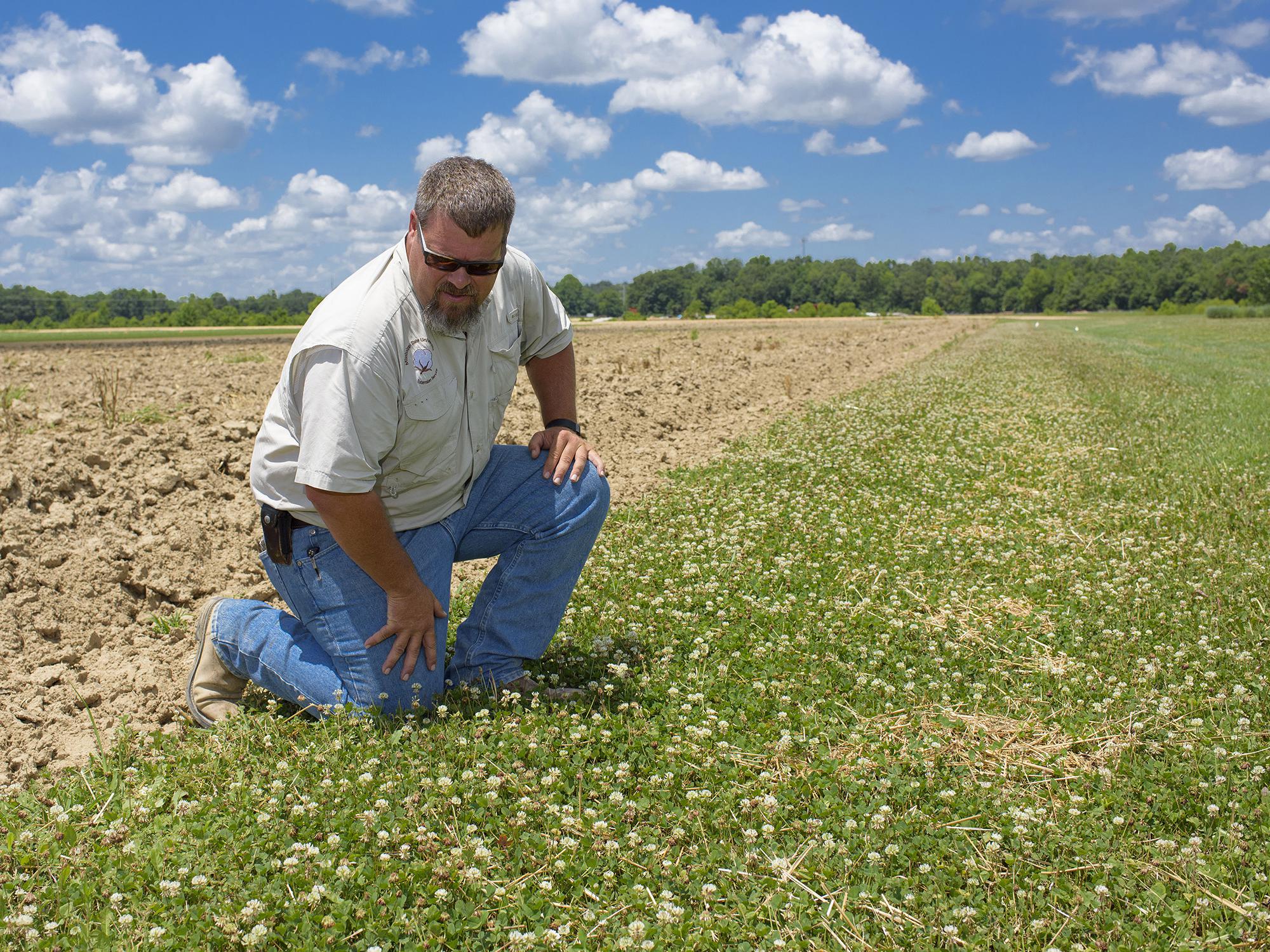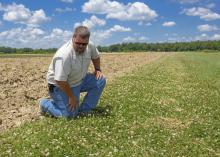Information Possibly Outdated
The information presented on this page was originally released on December 17, 2015. It may not be outdated, but please search our site for more current information. If you plan to quote or reference this information in a publication, please check with the Extension specialist or author before proceeding.
Herbicides, not insecticides are biggest threat to bees
STARKVILLE, Miss. -- People who care about honeybees know that insecticides and pollinators are usually a bad mix, but it turns out that herbicides used to control weeds can spell even bigger trouble for bees.
Jeff Harris, bee specialist with the MSU Extension Service and Mississippi Agricultural and Forestry Experiment Station researcher, said herbicides destroy bee food sources.
“When farmers burn down weeds before spring planting, or people spray for goldenrod, asters and spring flowers, or when power companies spray their rights-of-way, they’re killing a lot of potential food sources for bees and wild pollinators,” he said.
Harris said the direct effect of these chemicals on bees is so much less of an issue than their loss of food supply.
“Disappearing food is on the mind of beekeepers in the state,” he said. “That is even more important to them than losses of bees to insecticides.”
Johnny Thompson, vice president of the Mississippi Beekeeping Association, is a cattle and poultry farmer in Neshoba County who has been in the bee business for the last 10 years.
“Before we got back into bees, I sprayed pastures by the barrel to kill weeds. As a cattle farmer, weeds are a nuisance,” Thompson said. “I’m trying to grow grass for the cows to eat and not weeds, but as a beekeeper, those weeds are not weeds. That’s forage for the bees.”
Today, Thompson said he uses the bush hog more than he sprays herbicides to keep the food supply for bees intact on his land.
“If you kill everything the bee has for food, you may as well go in and spray the hive directly. The bees are going to die,” he said. “All the emphasis is being put on insecticide, but the greater risk to bees are the herbicides.”
He has made management changes for the sake of his bees’ food supply, but he recognizes the tension between current agricultural management practices and pollinators’ best interests.
“When you travel through the Delta or the prairie part of the state in February, the row crop land is purple with henbit blooming. By the end of March, it’s all gone because farmers burned it down with chemicals to try to kill everything in the field before they plant,” he said.
“They burn it down early because weeds in March or early April are a reservoir for insect pests to the crops that will soon be planted,” Thompson said.
Crops in the field, especially soybeans, are great sources of bee forage, and farmers and beekeepers can coordinate to protect both of their interests.
“We moved bees to the Delta this summer to make soybean honey,” Thompson said. “We’re working with the growers to try to put the bees in areas that are fairly protected and won’t get directly sprayed.”
But farmland is not the only place bees find food. Yards, roadsides, golf courses and power line rights-of-way are other places bees forage when plants are allowed to bloom naturally.
“We need to stop looking at them as weeds and instead look at these plants as forage,” Thompson said. “I can manage around the insecticides, but if herbicide use means there’s nothing for a bee to eat, there’s no reason to put a hive in an area.”
Contact: Dr. Jeff Harris, 662-325-2976; or Dr. John Adamczyk, 601-916-3369






